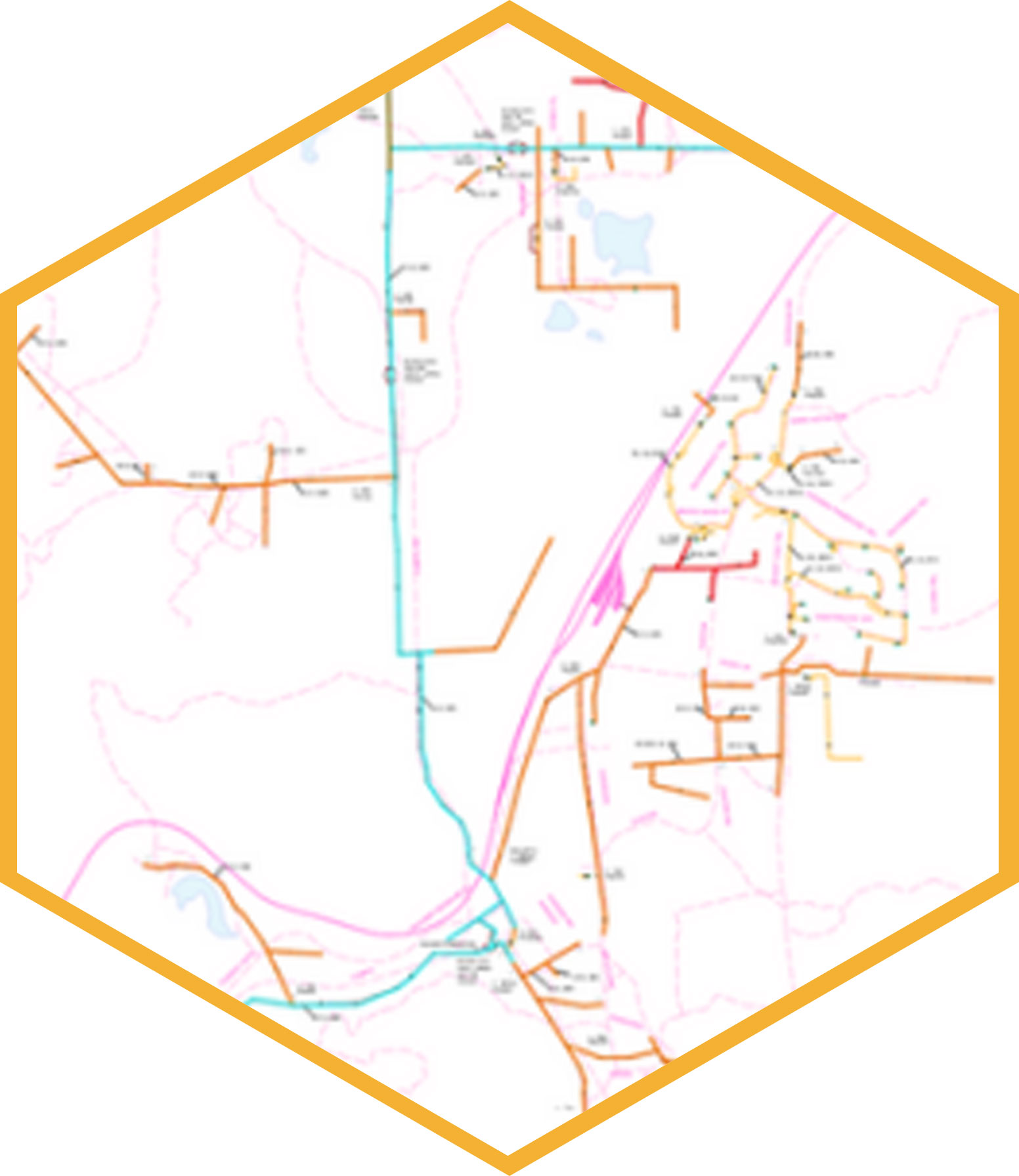ASEC has intimate knowledge and familiarity with the overhead and underground distribution programs and methodology at [REDACTED] and can provide the expertise needed to successfully scope, plan, and prioritize projects covered under this program. Having performed engineering design and analysis on Electric System Hardening programs (FiRM, FiRM True Up Remediation, & DIAR) and Transmission Engineering Projects (CMP, Reliability, Fiber, and Line Modeling) with distribution underbuild for many years, ASEC is well-suited to meet the client’s needs with regard to compliance, feasibility, preliminary routing, land requirements, environmental, permitting, and standards constraints.
Some of our specific client scoping experience comes from having successfully been part of FiRM distribution design projects wherein we were involved in performing scoping for circuits. Work involved desktop analysis for the distribution lines in the whole circuit and separating all the poles into multiple segments based on engineering considerations. Through our analysis, we were able to identify potential design challenges for each segment due to variable terrain or urban obstructions. By using site photographs, we were able to identify areas of potential land and environmental constraints as well for which we had to coordinate with the appropriate parties before beginning our design.
ASEC was also involved in creating scoping deliverables including pole lists for the land and environmental teams along with a detailed presentation for the whole line showcasing our understanding of the circuit and presenting any challenges that we observed during our preliminary analysis. Our analysis also helped in updating the scoping maps. We also made use of tools like QGIS to generate shapefiles for all the poles and present them as part of the scoping deliverables. After our initial scoping meetings with the client, we were involved in coordinating with the appropriate parties to resolve the observed preliminary challenges.
Historically, ASEC has leveraged its Project Management Team to aid in the communication with land, environmental, city, county, and internal client stakeholders to develop high-level scoping packages and develop realistic timelines for segments that are determined by the WiNGS model to be high-risk. ASEC has recently coordinated similar efforts with multiple stakeholders on the Corrective Maintenance Program (CMP) for the client where ASEC performs requests for prior rights and underground locates, coordinates with utility personnel utilizing GIS systems of historical boundaries, and presents design solutions within these parameters.
By leveraging prior client overhead and underground distribution field experience, with a former ESH and Apollo team member, and direct working experience with the WiNGS model, ASEC will be able to approach each project with a 360-degree view and determine potential roadblocks with the initial assessment and propose alternative routes or solutions as necessary to increase project efficiency.

